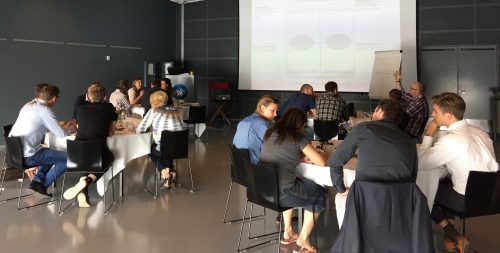That may sound like a contradiction in terms – I mean is the whole point of e-learning not that there is no ‘teacher’.

Yes and no.
- E-learning is flexible. Learning is self-paced. You can take as much time on a subject as you like. Watch and rewatch til you get it.
- No need to travel – it is an enormous cost and time saver
There are so many advantages over traditional classroom learning.
But, and that is serious but.
Possibly for exactly those same reasons e-learning can be challenging.
- You need a lot of self-discipline to make sure you get it done
- You can lose motivation when things get a bit tricky
- You may miss the feedback and encouragement, or possibly just another person to bounce off ideas and your own understanding with.
That is also why a substantial proportion of e-learning courses are never completed.
What you really need is a coach
In most areas of life where we would like improvement, we would hire a coach – when it comes to learning we call it a tutor. Adding a tutor to your e-learning program is incredibly effective – in fact, adding a tutor solves Bloom’s famous 2-sigma problem.
Bloom’s 2 sigma problem shows that students who receive one-on-one tutoring using mastery learning techniques perform two standard deviations better than students in a traditional classroom setting.
But supporting students individually becomes very expensive – that was Bloom’s problem – we know it is the best way to learn – but how to do it without breaking the bank?
When we combine e-learning with tutoring, you get the best of both worlds. You have the convenience and flexibility of e-learning, but with the added support and personalised instruction of a tutor.
A tutor will help you stay motivated, answer your questions, and provide immediate feedback.
All my e-learning programs come with a tutoring option – for all of the above reasons.
But if you think about why not apply this thinking to your learning in general?
What would you like to learn or get better at?
Today all the knowledge is out there – that is not the challenge. Knowledge is really available.
No, the real challenge is converting knowledge into new behaviour. The famous knowing-doing gap and that is where a coach/tutor can be of enormous help
Tell me more about what you would like to improve and we can put together a learning journey for you.





